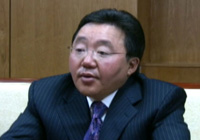



ULAN BATOR, Mongolia—Mongolia, a formerly communist nation sandwiched between two autocratic superpowers, once seemed an unlikely candidate for democratic reform.
But while its mighty neighbors China and Russia are allowing authoritarian tendencies to diminish the rule of law, impoverished Mongolia has persisted in building a more accountable government.
In one of the most underreported stories of the year, Mongolia is now plunging ahead with reforms aimed at making its society more open and less subject to the endemic corruption that has plagued many former communist states.
Mongolia’s media are rated “partly free,” according to New York-based Freedom House, a non-governmental organization that monitors press freedom around the world. Freedom House describes the media in both of Mongolia’s big neighbors China and Russia as “not free.”
Mongolia holds regular national elections under a mixed parliamentary-presidential system.
But it was once considered among the least likely of former communist nations to make a successful transition to democracy.
Twenty years ago
As a correspondent based in Beijing in January 1990 — 20 years ago — I was astonished to find myself reporting on a small pro-democracy movement that had suddenly emerged in Ulan Bator, the Mongolian capital.
Nearly 3,000 Mongolians, defying a ban on demonstrations, marched to the capital’s central square to call for democratic reform and restrictions on communist party rule. They met no resistance from police.
The marchers carried banners calling for glasnost and perestroika, the Russian words for Mikhail Gorbachev’s policies of openness and restructuring.
Within three weeks, the country’s ruling Communist Party Politburo resigned after agreeing to amend a constitutional clause guaranteeing the party’s leading role.
The party’s general secretary announced that he was resigning from the party. Apparently with advice and support from Moscow, he adopted a moderate approach to political dissent. He ruled out a “Chinese solution,” a reference to the Chinese army’s crackdown on protesters in Beijing in June 1989.
From communism to market economy
Mongolia had been a Soviet vassal state. It was the world’s second communist country after the Soviet Union. An estimated 45,000 to 50,000 Russian troops remained in the country when those first pro-democracy protests broke out.
Now Mongolia was moving much more rapidly in a democratic direction than any of the former Soviet republics of Central Asia.
And the country’s new leaders vowed to early on to privatize state enterprises and create a free-market economy.
But progress has come with some difficulty.
When the former Soviet Union cut off subsidized trade and
economic aid in 1990, the country’s gross domestic product dropped by
as much as a third. Food shortages followed. Prices skyrocketed.
Agricultural and industrial output fell drastically.
In mid-1992, I visited Mongolia as a journalism trainer. I found that the country’s banking system was nearly broke. Because of bad judgment and inexperience, two young reformers had lost almost all of Mongolia’s foreign exchange in a series of currency dealings that went sour.
Mongolia’s Future
